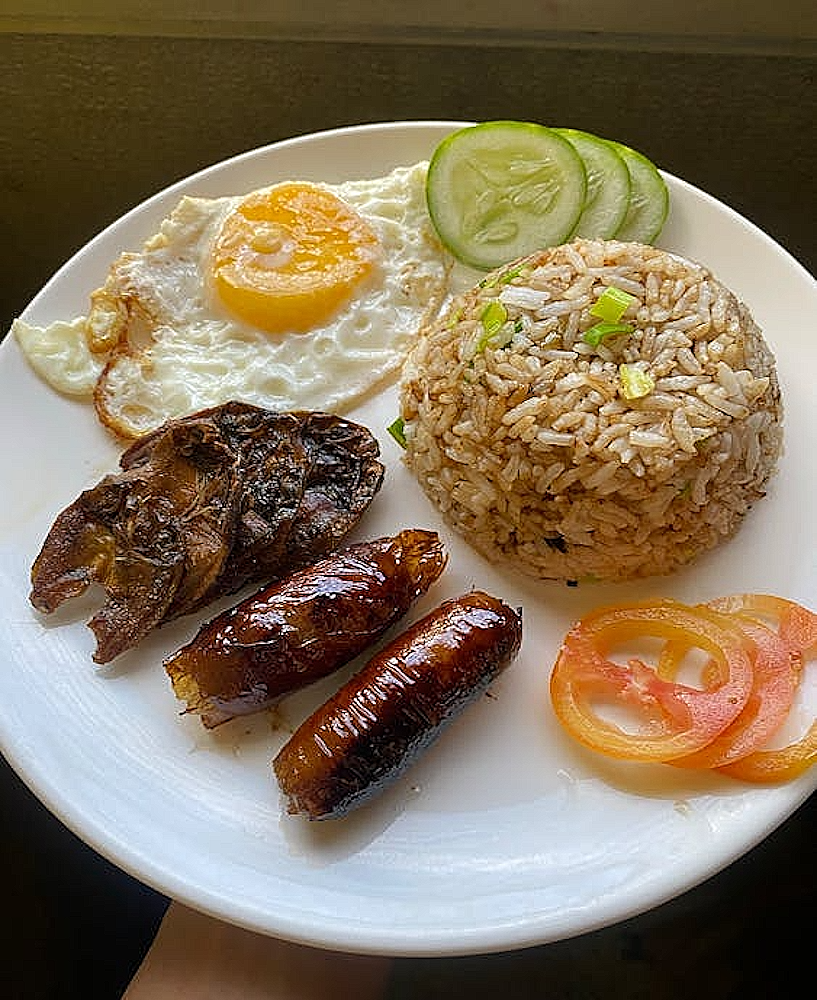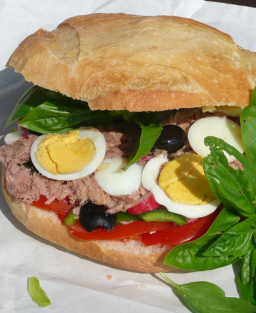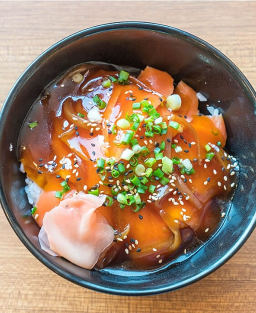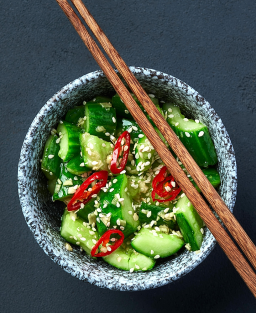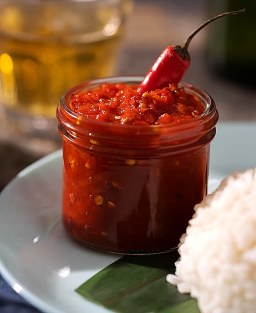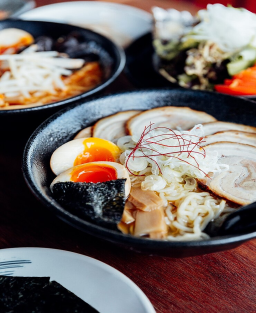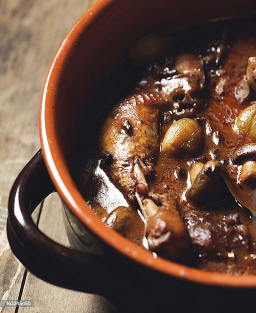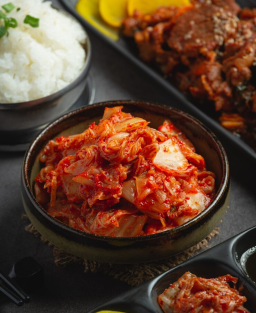- Out-of-Stock
Longganisa Hamonado with Labuyo Chili Spicy variant of the famous sweet Filipino sausages
Longganisa Hamonado with Labuyo Chili
Spicy variant of the famous sweet Filipino sausages
The word longganisa comes from the Spanish longaniza, but Filipino recipes vary greatly. It is a local adaptation of the Spanish longaniza, itself inspired by the Roman lucanica (smoked and seasoned ham), introduced to the Philippines during the Spanish colonial period.
Two main families emerged in the Philippines:
Hamonado (sweet) — a very popular specialty from Pampanga, influenced by Southeast Asian sweet satays, Chinese lap cheong sausages, and the characteristically sweet flavors of local cuisine. This hamonado version perfectly reflects this blend of culinary influences, combining sweetness with the rich flavors typical of the region.
De recado (spicier and garlicky) — characterized by bolder flavors thanks to generous seasoning with garlic and other spices, offering a pronounced taste appreciated by lovers of stronger, spicier dishes.
Labuyo chili, endemic to the Philippines, is often used in vinaigrettes or sauces, but here it is incorporated directly into the filling for those who enjoy extreme heat.
Spicy Variant: Hamonado with Labuyo Chili
The spicy version of hamonado generally follows the sweet recipe, but adds siling labuyo (Capsicum frutescens), a very potent Filipino chili (80,000–100,000 SHU) capable of setting your senses ablaze.
Recipe: Longganisa Hamonado with Labuyo Chili (Spicy Version)
Ingredients (for about 1 kg / 8–10 sausages)
-
800 g ground pork (ideally a fat/lean mix for better juiciness)
-
½ cup brown sugar or molasses (for sweetness and caramelization)
-
¼ cup vinegar (coconut, cane, or calamansi juice for a local tangy note)
-
4 cloves garlic, crushed
-
1–2 labuyo chilies, finely chopped (adjust to taste; beware—very hot, 80,000–100,000 SHU)
-
Salt and black pepper to taste
-
Sweet paprika (atsuete), for color and a light smoky note
-
(Optional) 2–3 tbsp pineapple juice to tenderize the meat and add fruity brightness
-
Natural sausage casings (soaked in warm water 30 min before use) or “skinless” version shaped into patties (pudpod)
-
(Optional) a little oil for cooking
Preparation
1. Mix the ingredients
In a large bowl, combine ground pork with sugar, vinegar (or calamansi juice), crushed garlic, chopped labuyo chili, salt, pepper, and sweet paprika. Add pineapple juice if desired. Mix thoroughly so the flavors blend well.
2. Marinate
Cover and refrigerate for at least 4 to 8 hours, ideally 24 hours, to allow the meat to fully absorb the flavors.
3. Prepare the sausages
-
If using natural casings, rinse and soak them in warm water for 30 minutes. Stuff gently using a sausage funnel.
-
For the skinless version, simply shape the mixture into thick patties (pudpod).
4. Cooking
Heat a skillet over low to medium heat with a little oil if needed. Cook the sausages slowly to avoid burning the sugar, turning them regularly until caramelized and fully cooked through (about 15–20 minutes). They can also be gently grilled.
Extra Tips
-
Long marination is key to deep, balanced flavor.
-
Labuyo chili is very hot—start with a small amount if you’re not used to spicy food.
-
For more umami, some add a spoonful of soy sauce or fish sauce, though this slightly changes the traditional sweet profile.
-
The skinless (pudpod) version cooks faster and has a different texture.
-
Pineapple juice acts as a natural tenderizer and balances the sweetness.
Serving Suggestions
Traditionally served with:
-
Sinangag (garlic fried rice) and fried egg — the classic Filipino breakfast (longsilog)
-
Sawsawan: spicy vinegar sometimes infused with labuyo, with shallots and tomatoes for freshness and acidity
Best when lightly grilled to caramelize the sugar and bring out the sweet-spicy-salty mix.
Regional Variants
| Variant | Region | Style | Flavor | Labuyo chili | Notes |
|---|---|---|---|---|---|
| Classic Hamonado | Pampanga, Cebu | Sweet | Sweet, slightly smoky, garlicky | No | Most common nationwide |
| Spicy Hamonado | Rare, artisanal | Sweet + Spicy | Sweet + intense heat | Yes | Homemade variant, heat level varies |
| Spicy Recado | Tuguegarao, Vigan | Savory-Spicy | Very spicy, heavy garlic | Sometimes | Classic pure “de recado” style |
How to Enjoy It
Traditionally served with:
-
Sinangag (garlic fried rice) and fried egg — the famous longsilog
-
Sawsawan: spicy vinegar (sometimes infused with labuyo), with shallots and tomato
Offers a warm contrast of sweet vs. spicy-salty; best slightly grilled for caramelization.
Anecdotes & Notes
Most Filipinos favor the sweet taste, with spiciness usually limited to 1–2 labuyo chilies since intense heat is less popular.
Commercial brands like CDO Funtastyk or J&F Yummy are known for replicating the signature sweet flavor, which some compare to Jollibee’s taste.
Spice Scale (labuyo chilies finely chopped)
-
Mild: ½ chili
-
Medium: 1–2 chilies
-
Spicy: 3–4 chilies
-
Extreme: 6 chilies or more
Summary
-
Style: sweet longganisa (hamonado), boosted with labuyo chili
-
Flavor: sweet, slightly tangy, with intense chili heat
-
Origin: recent regional adaptation, merging hamonado tradition with local spices
-
When to eat: typical breakfast (longsilog), smoked or grilled, with vinegar dipping sauce











